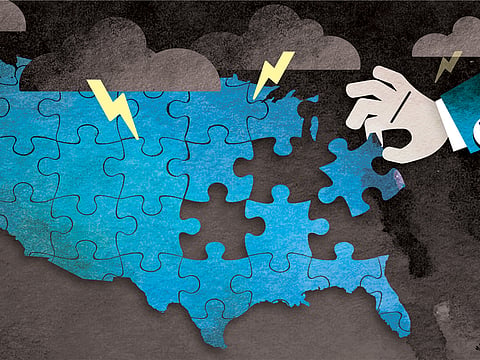Elections 2020: How Democrats won the war of ideas in America
COVID-19 has pushed more voters to the left as people are fearful of economic insecurity

Over the last 100 years, Americans have engaged in a long debate about the role of markets and the welfare state. Republicans favoured a limited government, fearing that a large nanny state would sap American dynamism and erode personal freedom. Democrats favoured a larger state, arguing that giving people a basic economic security would enable them to take more risks and lead dignified lives.
That debate ebbed and flowed over the years, but 2020 has turned out to be a pivotal year in the struggle, and it looks now as if we can declare a winner. The Democrats won the big argument of the 20th century. It’s not that everybody has become a Democrat, but even many Republicans are now embracing basic Democratic assumptions. Americans across the board fear economic and physical insecurity more than an overweening state. The era of big government is here.
In this week’s New York Times/Siena poll, two-thirds of Americans support allowing people to buy health insurance through the federal government, the public option. Two-thirds support Joe Biden’s $2 trillion plan to increase the use of renewable energy and build energy-efficient infrastructure. Seventy-two per cent of likely voters, including 56% of Republicans, support another $2 trillion in COVID-19 relief to individuals as well as state and local governments.
COVID-19 has pushed voters to the left. It’s made Americans feel vulnerable and more likely to support government efforts to reduce that vulnerability. A study led by economists Alex Rees-Jones, John D’Attoma, Amedeo Piolatto and Luca Salvadori found that people in counties with high numbers of COVID-19 infections and deaths were significantly more likely to support expanding government-provided unemployment insurance and expanding government-provided health care. This greater support for social safety net programs transcends political ideology.
The 2020 shift to the left follows years of steady leftward drift. In 2015, a majority of Americans believed that “government is doing too many things better left to business and individuals.” Now only 39% of Americans believe that, while 59% think, “Government should do more to solve problems,” according to Pew Research Center.
Two-thirds of Americans think government should do more to fight the effects of climate change. At least 60% of Americans support raising the minimum wage and providing tax credits to low-income workers. Eighty-two per cent of voters and 70% of Republicans would like to consider legislation to expand paid family and medical leave.
Both parties are actually moving left
It’s commonly said that in the age of polarisation the Democrats are moving left and the Republicans are moving right, but that’s not true. As Charles Blahous and Robert Graboyes of the Mercatus Center show, both parties are moving left; it’s just that Democrats are moving left at 350mph while Republicans are moving left at 50mph.
To show how the whole frame of debate has shifted, Blahous and Graboyes list the policies that are commonly discussed among Democrats now but that would have been too far left to get a hearing at the Democratic National Convention of 1996. They’ve come up with many examples, including cancelling college debt, more than doubling the minimum wage, shutting down coal-fired plants and guaranteeing every American a job. Then they look for current Republican policies that would have been considered too conservative for the 1996 Republican National Convention. They couldn’t find any.
We can see the familiar historic pattern. A crisis hits, like COVID-19, the financial crisis, World War II or the Great Depression. Government expands to meet the crisis. Republicans eventually come around and ratify the expansion. It should be said there are limits to how far left the country is drifting. This is still a nation where 72% of people call themselves moderates or conservatives, and only 24% call themselves liberal. Americans still have a strong basic faith in democratic capitalism and dislike socialism, by a 2-1 margin.
30 years of neoliberal economics
In the background of this debate is the fact that the last 30 years of neoliberal economics have seen the greatest reduction in global poverty in all human history. Many have a vestigial memory of the 1970s stagflation and the 1980s Eurosclerosis, when bloated government regulations clogged economies and slowed prosperity. Even while support for government programs rises, trust in government is near record lows. Americans like it when government sends out checks to pay for things like child care, college and COVID-19 relief. They do not like proposals that concentrate power in Washington.
Still, you can see why Donald Trump was careful, both in 2016 and 2020, to focus his campaign on cultural and American identity issues and studiously avoid having a debate on role-of-government issues. Even by 2016, Republicans could no longer win that debate. If you want to get a sense of where the Centre of gravity might be on these issues, I’d point you to a report by Brink Lindsey and Samuel Hammond of the Niskanen Center. They call for a much stronger social safety net to protect people from the hazards of life — poverty, sickness, joblessness — but they also call for reform in three sectors where government has been captured by insider manipulation: housing, finance and health care.
It was a vigorous debate that lasted many decades, but the liberal welfare state won — a robust capitalist economy combined with generous social support.
David Brooks is a noted political and cultural commentator
The New York Times
Sign up for the Daily Briefing
Get the latest news and updates straight to your inbox







